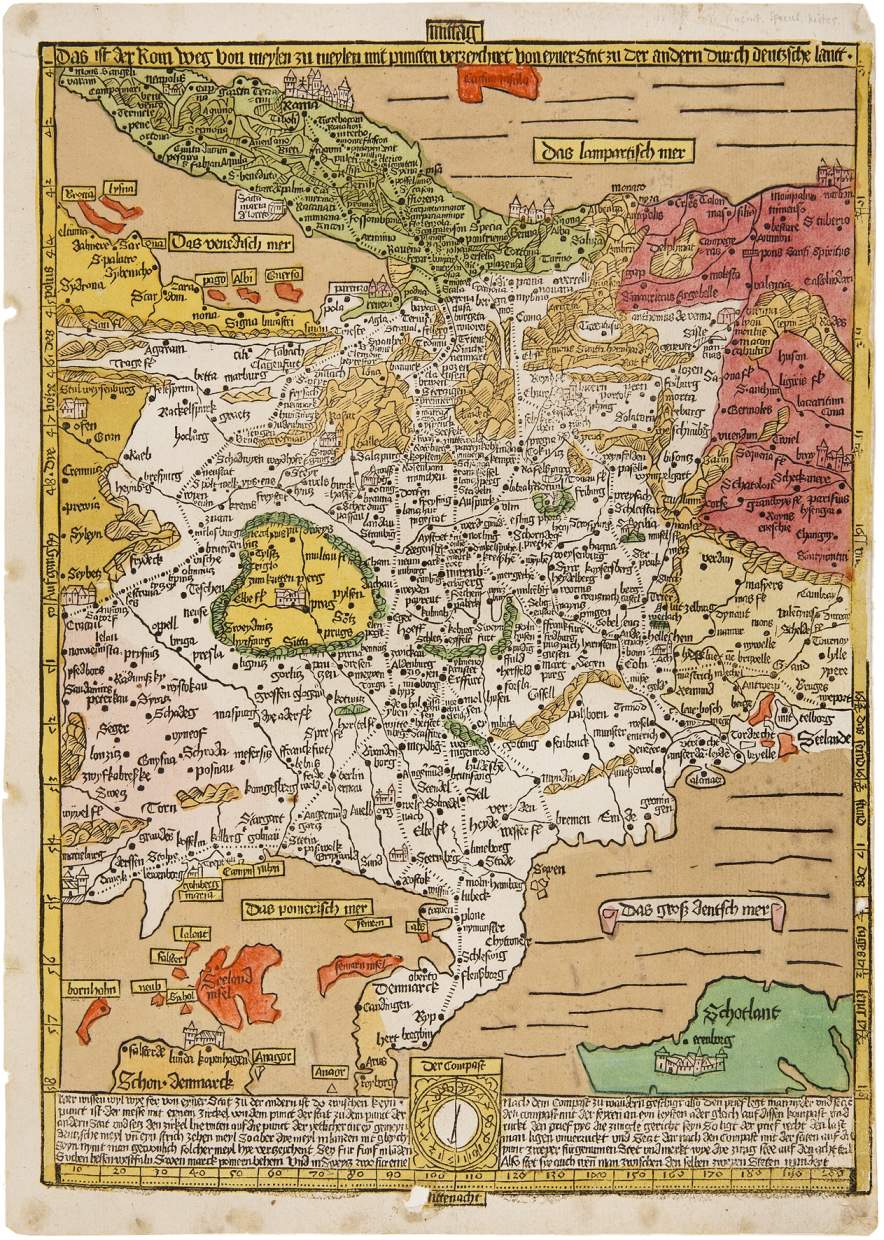Artworks



As compass maker, cartographer, and astronomer, Erhard Etzlaub (c. 1460-1532) made crucial contributions to the development of regional cartography.
In 1500, a Christian Jubilee year, pilgrims from all corners of Europe flocked to Rome. It is clear that this map was created for exactly this purpose – a guide map for pilgrims. It is thus generally dated about 1500 or slightly earlier. Etzlaub's Rom weg map was certainly a great success. It was printed in great quantities, the present copy was most probably produced in the same year.
Altogether 13 copies of the Rom weg map are known in two variants only slightly deviating from each other, i.e. they were printed from two different woodblocks. The present copy was printed from the second block. It is thus a contemporary, very close and exact copy of the first map in an early stage. This version survived in only three copies.



